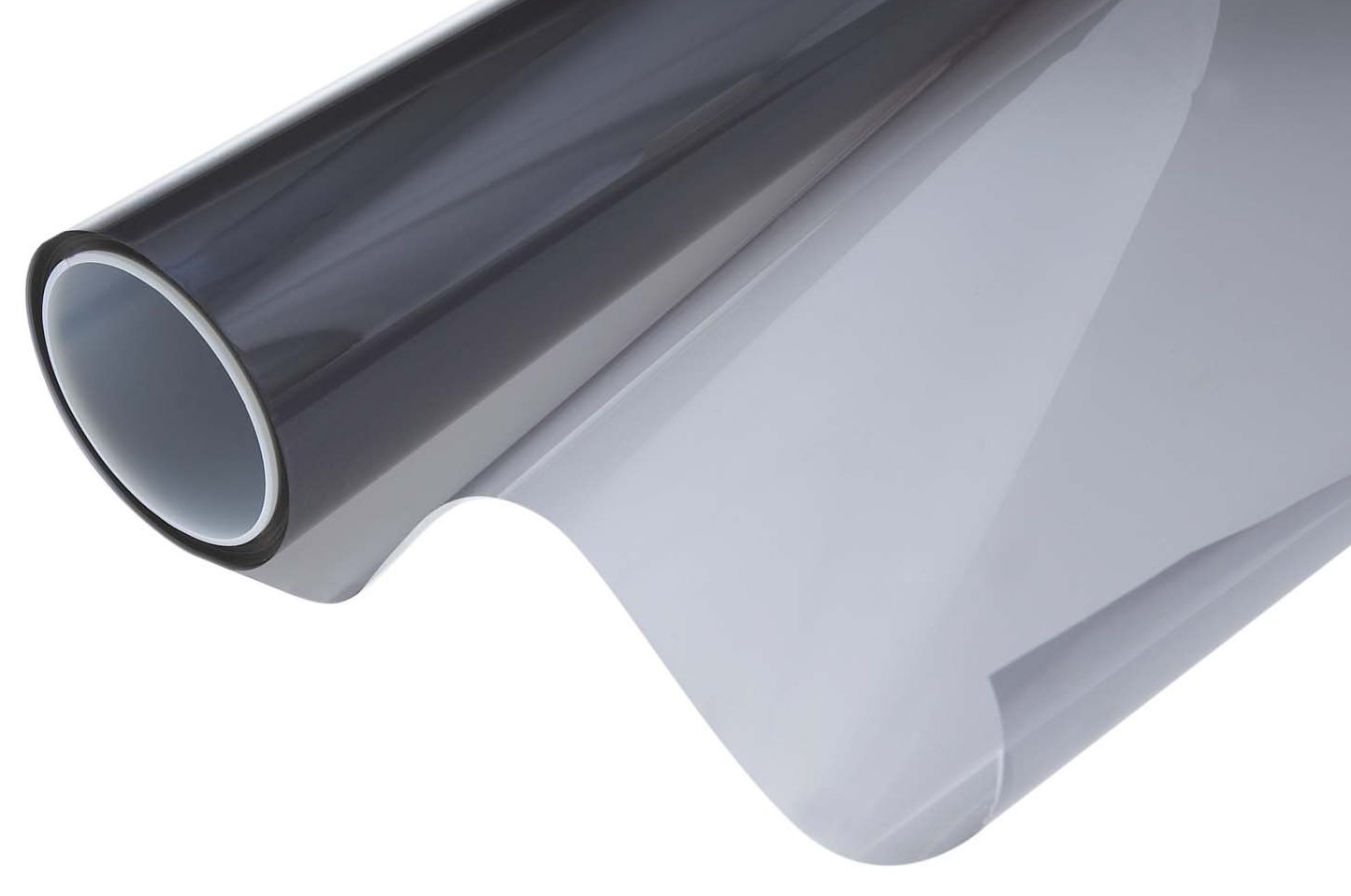ADHESIVE WINDOW FILM
- Home
- ADHESIVE WINDOW FILM


% Glare Reduction
% Solar Energy Rejection
% U.V. Rejection
Silver Reflective
92
91
99
Bronze Non Reflective
81
91
99
Grey Non Reflective
92
59
99
Types of Film
Reflective Window Films
Metalized films provide a high amount of solar control because they reflect a lot of solar radiation. They get their name from the extremely thin metal layer within the film, usually aluminium. These films are made by vacuum coating a layer of metal onto polyester, then a clear laminate is applied to protect the metal. These are then sandwiched between a sticky adhesive layer. A UV inhibitor and a scratch resistant coating are also added. Its shade and colour are mainly determined by the type of metal used to make it.
Metalized window film reflects more light than it absorbs and work on a ‘daylight privacy’ basis. Viewing through the film is effective from the ‘lower light level’ side of the film. This means, when these films are applied to windows facing outside people can see out of the room during normal, natural daylight hours, but people cannot see inside easily. However, the situation is reversed at night. A ‘mirror effect’ then occurs when looking out of the window so it is much easier to see into the room than out of it, so if the inside is illuminated and the outside is dark then the film loses it’s one-way vision properties. These films can provide some privacy at night depending on the lighting arrangement inside the building, but if you want 100% privacy then blinds or curtains are still required. Window films with a sticky backing are also a cost effective solution to sun control.
Reflective films give a shiny metallic look to the outside of buildings. This can be an attractive feature when coupled with modern architecture but it is not to everyone’s taste and the reflected dazzle/glare can be a problem. Reflective films can also cause interference with radio, GPS and cell phones.
Reflective films are the best option if solar control is the overriding consideration in hotter climates, and people inside do not mind the slight reflections you get at night.
Non-Reflective Window Films
Although they are non-reflective since they do not include any metals, these films provide heat and glare control through solar absorption. Dyed films come in a variety of colours and are usually produced by applying a dye to the polyester base film along with a UV inhibitor. There are several product benefits associated with dyed films. They provide increased optical quality and clarity through strong glare control and, all things being equal, the dry out time is shorter than for a film with a metal layer. It’s important to note that dyed films are less effective in controlling solar heat gain because they control heat by absorbing solar energy. The heat absorbed by the film is transferred to the glass, then dissipated outward with the movement of air. Metal films reflect the solar energy, so they are more effective. Non-reflective films tint the glass with a low sheen finish which means there isn’t a highly mirrored appearance from the outside. The light balance will depend on whether you can see through the film from either side. Very dark tints make the films more difficult to see through.
Non-Reflective Films
Not all films are appropriate for all types of glass. When selecting a film, factors such as the absorptance of the glass and film, the pane size, glass thickness, and window construction (single pane, insulated, treated, laminated, or toughened) should be taken into consideration. Proper advice on film selection is necessary to prevent thermal stress-induced glass cracking.
However, it is still possible for a pane of glass to break after film application due to previous damage during window glazing, building movement, or other physical stresses not apparent during film installation.
While the probability of glass breakage following film application is low, it is impossible to predict the edge condition of the glass without removing it from the frame, which is impractical.
Adhesive window film is only suitable for flat glass and should never be applied to polycarbonate (plastic). We do not recommend using metalized (reflective) film on wired glass, double glazed units, or heavily tinted glass, as thermal cracking may occur.
Adhesive window films are constructed from a multi-lamination of micro-thin polyester. They also have a scratch resistant coating (SR) to protect the film surface and enhance durability (except films for external application).
Most films are applied to the interior surface of a glass window in a home, commercial building, or vehicle. They have a scratch resistant coating on the outer surface to protect the film. Window film is specifically designed to protect windows from heat caused by sunlight, as well as IR and UV light. To do this, dyes and metals are layered between layers of polyester film which are bonded together. The type, amount, and quality of the dyes and metals used in the manufacturing process determine the quality, durability shade, colour, heat absorption, UV reflection, security, etc. of the finished product.
All films are covered by a manufacturer’s 5-year Guarantee against peeling, cracking, demetalization and delamination.
Window films have many benefits depending on film choice:
A cooler working environment
Significantly reduce solar heat gain and temperature inside a building, vessel etc.
Reduction in AC requirements
Reduce air conditioning costs.
Reduction in maintenance
Extend life of HVAC systems by reducing maintenance and strain on the system.
Go green
Decrease environmental emissions.
Increased comfort
Increase occupant comfort.
Improve visibility
Reduce glare to improve visibility inside, especially for computer screens and VDUs.
Privacy
Provide daytime privacy.
Protect exposed areas of the body
Block up to 99% of UV radiation.
Reduced fading of furniture
Offer significant fade protection for soft furnishings, carpets, woodwork etc.
Improve aesthetics
Improve building aesthetics and accent windows.



